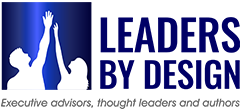Understanding the Harmful Behaviors That Undermine Your Culture and Leadership Effectiveness.
As executive coaches, we hear daily from clients about the bullying they have either witnessed or experienced firsthand. These stories come from every sector—financial services, pharmaceuticals, healthcare, technology, telecommunications, entertainment, law, government, nonprofits, and beyond. Bullies are pervasive, and no industry is immune.
In our previous article, The Total Cost of Workplace Bullying, we examined the hidden financial and human costs that bullying inflicts on organizations—costs that quietly erode productivity, morale, and profitability over time. But understanding those impacts is only the first step. In this article, we outline the four most common types of workplace bullying. By recognizing each type’s behaviors and motivations, leaders can take targeted, effective action to confront bullying and build a healthier, more resilient organizational culture.
Through years of listening and observation, we have identified four primary types of workplace bullies: the Belier, the Blocker, the Braggart, and the Brute.
The Belier
Beliers operate through covert slander, spreading falsehoods and damaging rumors that quietly undermine the credibility of key contributors. For senior leaders, this type of bullying erodes trust within teams and damages reputations, often in ways that are difficult to detect or address directly. The insidious nature of their behavior creates a toxic undercurrent that can stall innovation, derail strategic initiatives, and weaken alignment across departments.
The Blocker
Blockers impose rigid, unspoken rules and pursue perfection through excessive control, deliberately excluding input by preventing others from participating. They demand strict, mechanical adherence to processes without encouraging feedback. This leads to an excessive focus on minor details, procedures, and timelines—ultimately causing critical strategic objectives to be neglected, and creating an environment where flexibility and creative problem-solving are suppressed.
The Braggart
Braggarts in the workplace exhibit narcissistic behaviors, consistently directing attention toward themselves to enhance their own image and control dynamics. Their relentless focus on self-promotion undermines empathy, stifling collaboration and innovation. By overshadowing colleagues, Braggarts diminish others’ creativity and erode their sense of self-worth, ultimately weakening team cohesion and engagement, which can lead to increased turnover, reduced productivity, and compromised leadership effectiveness.
The Brute
Brutes employ aggressive, antisocial tactics like yelling to assert dominance, showing blatant disregard for the rights and safety of colleagues. Their relentless bullying behavior not only undermines individual performance but also drives high-potential employees to disengage or leave the organization altogether. This toxic dynamic fosters a culture of fear, erodes trust, and significantly diminishes overall productivity and morale across teams. Left unchecked, this type of bullying can lead to decreased employee well-being, increased turnover rates, and a hostile workplace atmosphere that undermines organizational effectiveness and long-term success.
Leadership Reflection
Bullying, in any of these forms, undermines psychological safety, innovation, and retention—issues that land squarely within executive responsibility. As a senior leader, take time to reflect: Are these types of bullying present in your organization’s culture? What policies, coaching, and accountability structures do you have in place to address them effectively?
Addressing workplace bullying begins with awareness and courageous leadership. When leaders model respectful, decisive action against bullying, they not only protect their people—they strengthen the organization’s capacity for trust, creativity, and sustainable growth.
For a strategic framework to identify and neutralize destructive behaviors like the Belier, Blocker, Braggart, and Brute, explore The Bully‑Proof Workplace by Peter J. Dean and Molly D. Shepard—an essential resource for leaders committed to building psychologically safe, high-performance cultures.
In our next post, Identifying the Hidden Signs of Workplace Bullying — A Guide for Senior Executives, we’ll share how to recognize the often-overlooked signs of bullying so you can better protect and empower your teams.




